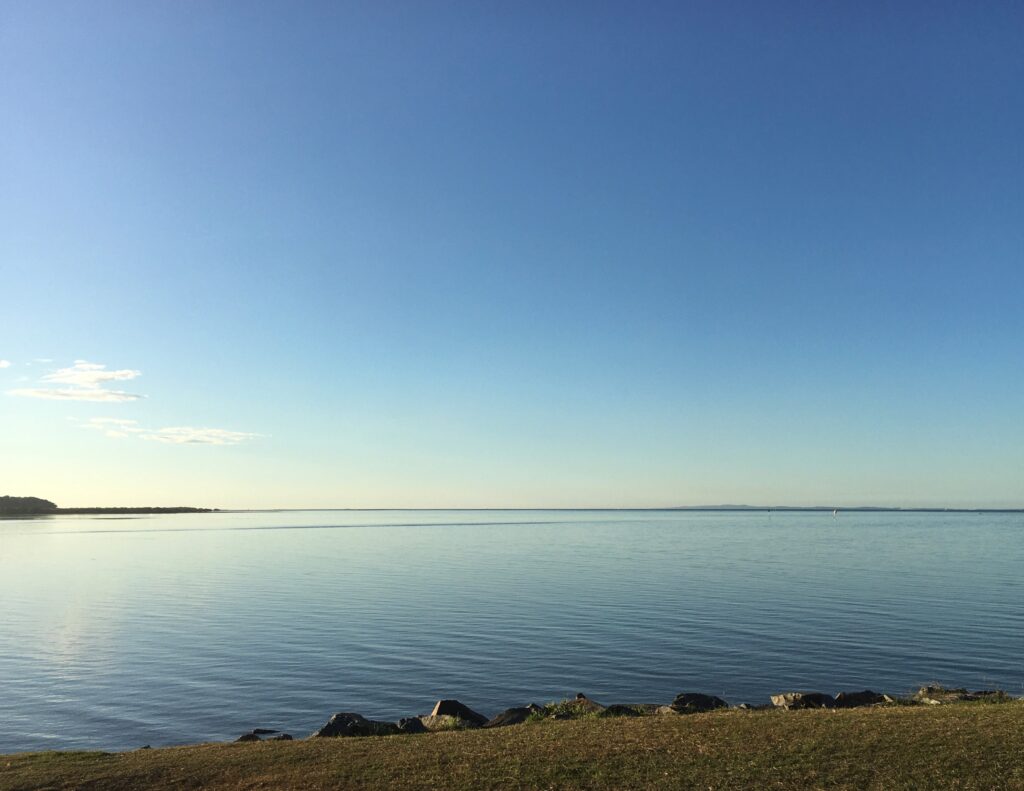A mind replete with faith in the Buddha of Infinite Light
Is assured rebirth in the sublime Blissful Pure Land.
A mind awakened with buddha-qualities
Is in union with the Blissful Pure Land, wherever it is.
Buddhist cosmology encompasses an unimaginably vast number of world systems beyond our earthly home.
Outside of the mundane world – the six realms of samsara – there exist innumerable pure lands extending in all ten directions of the universe (the eight points of the compass, the zenith, and the nadir).
These purified paradises are the dwelling places of advanced beings, including celestial buddhas and great bodhisattvas.
Among the countless pure lands, several are especially important, including those of Vairochana, Vajrasattva, Tara, Avalokiteshvara, Maitreya, and Guru Padmasambhava.
The best known is Sukhavati, the Blissful Pure Land, which lies in the western direction, beyond numerous universes.
This ideal world is the abode of the Buddha of Infinite Light, who presides over an untold number of seekers of enlightenment, ascetics, and other disciples.
Because the light of his body fills all the buddha pure lands without hindrance, his name is Amitabha in Sanskrit, meaning Infinite Light.
Amitabha is the focus of a devotional tradition known as Pure Land Buddhism that became very popular in China, Korea, and Japan.
In Tibet, the Blissful Pure Land is a favourite object of prayer and meditation, especially in rituals for the dead.
In the sutras, the historical Buddha, Shakyamuni, assures devotees that this is the easiest pure land for taking rebirth and the most joyful and powerful place for advancing toward enlightenment.
Whoever takes rebirth in the Blissful Pure Land will attain full enlightenment, at least in one lifetime, because of the qualities of this pure land, the blessings of the Buddha of Infinite Light, and their own merits.
Sources of the Pure Land Tradition
Several Buddhist scriptures are the sources of the tradition of buddha pure lands.
Both sutras (common teachings) and tantras (esoteric teachings) contain the names and descriptions of various pure lands, but Shakyamuni Buddha gave the greatest attention to describing the Blissful Pure Land of Amitabha Buddha, in vivid and beautiful detail.
Of particular importance are two Mahayana sutras known as the Larger Sukhavati-vyuha Sutra and the Smaller Sukhavati-vyuha Sutra.
These teachings are the discourses of the Buddha to his close followers.
He taught the larger sutra on Vulture’s Peak (Mount Gridhakuta) near the town of Rajagriha (in modern-day Rajgir, Bihar State, India) to Ananda and Ajita and a huge assembly of other disciples.
He taught the smaller sutra in the Jeta Grove (in Shravasti in modern-day Uttar Pradesh State, India) to Shariputra and a great assembly of disciples.
These two sutras have appeared in many translations, including Chinese (since the third century C.E.), and Korean and Japanese (since the seventh century).
The great Tibetan translator Yeshe De rendered them from Sanskrit into Tibetan in the ninth century.
The Three Aspects of the Pure Land
As we noted earlier, the Buddha of Infinite Light and his Blissful Pure Land as described in Peaceful Death, Joyful Rebirth belong to the “manifested form,” one of three aspects or bodies of buddhahood.
The first is the ultimate body (dharmakaya), which is the formless, pure nature of buddhahood, identical with reality itself. It is the absolute state of total openness and emptiness, free from dimensions, characteristics, and limitations.
The second is the enjoyment body (samboghakaya), which is the state of non-duality and oneness. This is the pure land with form body, pure and inseparable from the buddha-wisdom itself. It is all-pervading, everlasting, never-changing, and ever joyful.
The ultimate pure land and the enjoyment pure land can be seen only by those who are enlightened.
The third aspect of buddhahood is the manifested body (nirmanakaya). This is the physical form in which Shakyamuni Buddha and other buddhas have manifested in our human world.
The manifested pure land is the relative form that can be perceived by ordinary or mundane beings like us if we have accumulated meritorious deeds.
If we are reborn in one of the joyful, peaceful manifested pure lands, we will advance our spiritual attainment and reach the absolute pure land.
As I have emphasized a number of times, the perceptions and experiences we have at different stages of life – especially at the time of death — are a result of the mental habits that we have generated and ingrained in our mind stream in the past.
If our minds have been inflamed and turned into a burning rod of anger, hatred, and negative perceptions, then appearances and experiences of this life and especially of our future lives will arise for us in the form of a hellish world.
If our minds have been occupied by peaceful, joyful, and caring thoughts and actions, and if we have been enjoying positive perceptions, such as the forms and feelings of the Blissful Pure Land, then the world that will arise as the place where we take birth will be a positive world of peace and joy, such as the Blissful Pure Land.
The main focus of the trainings described in Peaceful Death, Joyful Rebirth is to take rebirth in the manifested form of the Blissful Pure Land. It is easier to take rebirth there than in any other pure land because of the powerful vows made by the Buddha of Infinite Light to bring all beings to his Blissful Pure Land and help them attain enlightenment.
Source: Based on Thondup, Tulku. Peaceful Death, Joyful Rebirth: A Tibetan Buddhist Guidebook. Shambhala. Kindle Edition.

Prayer to Buddha Amitābha
O Victorious One and Protector Amitābha,
To you I pray: inspire me with your blessing.
As soon as it is time to leave this life behind,
Guide me, I pray, to the realm of Sukhāvatī!
by Dodrupchen Jigme Tenpai Nyima (for Lobzang)
Translated by Abraham Ta-Quan, 2020.
Source: https://www.lotsawahouse.org/tibetan-masters/dodrupchen-III/amitabha-prayer
